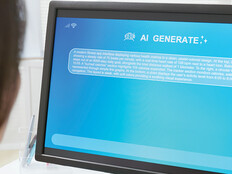Meet Big Data's Younger Sibling: Little Data
The ability to capture levels of data previously unimaginable has inspired a bit of a hoarder mentality among organizations and technology companies.
Companies are stashing overwhelming stockpiles of data in the hopes of gaining a unique advantage to edge out the competition.
“Most organizations measure too many things that don’t matter, and don’t put sufficient focus on those things that do, establishing a large set of metrics, but often lacking a causal mapping of the key drivers of their business,” said an Accenture report on Big Data analytics.
That’s where Little Data comes in.
Most of us already know that Big Data needs analytics tools to make sense of it all. Mark Bonchek, chief catalyst of Orbit writes in the Harvard Business Review that Little Data needs to be combined with Big Data in order to really achieve value and gain insights at the individual level.
He uses the example of wearable fitness technology to make his point.
Little Data without Big Data is incomplete. One complaint about portable fitness devices is that they aren't sufficiently prescriptive. They don't tell you what to do based on your behavior. How much activity should I be getting? If I'm not sleeping well, what can I do to sleep better?
In many ways, Big Data is like painting. The huge data sets allow companies to paint with a broad brush; Little Data enables companies to use a finer brush to flesh out the details.
But who is Little Data for exactly? While the call for companies to hire Big Data scientists has rang loud and clear, Bonchek believes Little Data is best used by customers so they can feel empowered and make informed decisions for themselves. He elaborates further in his blog post.
While companies build up their business intelligence teams and hire (Big) Data scientists, companies should also look to create services based on Little Data that empower their customers. These services would enable customers to pull information towards them when they need it, instead of just trying to figure out what message to send and when to send it.
They would enable customers to make better decisions themselves, instead of trying to figure it out for them. This is a new way of thinking, and a new way of engaging customers. Perhaps we need a new generation of (Little) Data scientists to figure it out.
As we get to know Big Data more, it’ll behoove businesses to get well acquainted with its younger sibling Little Data too. Let’s just hope that a sibling rivalry doesn’t develop.








